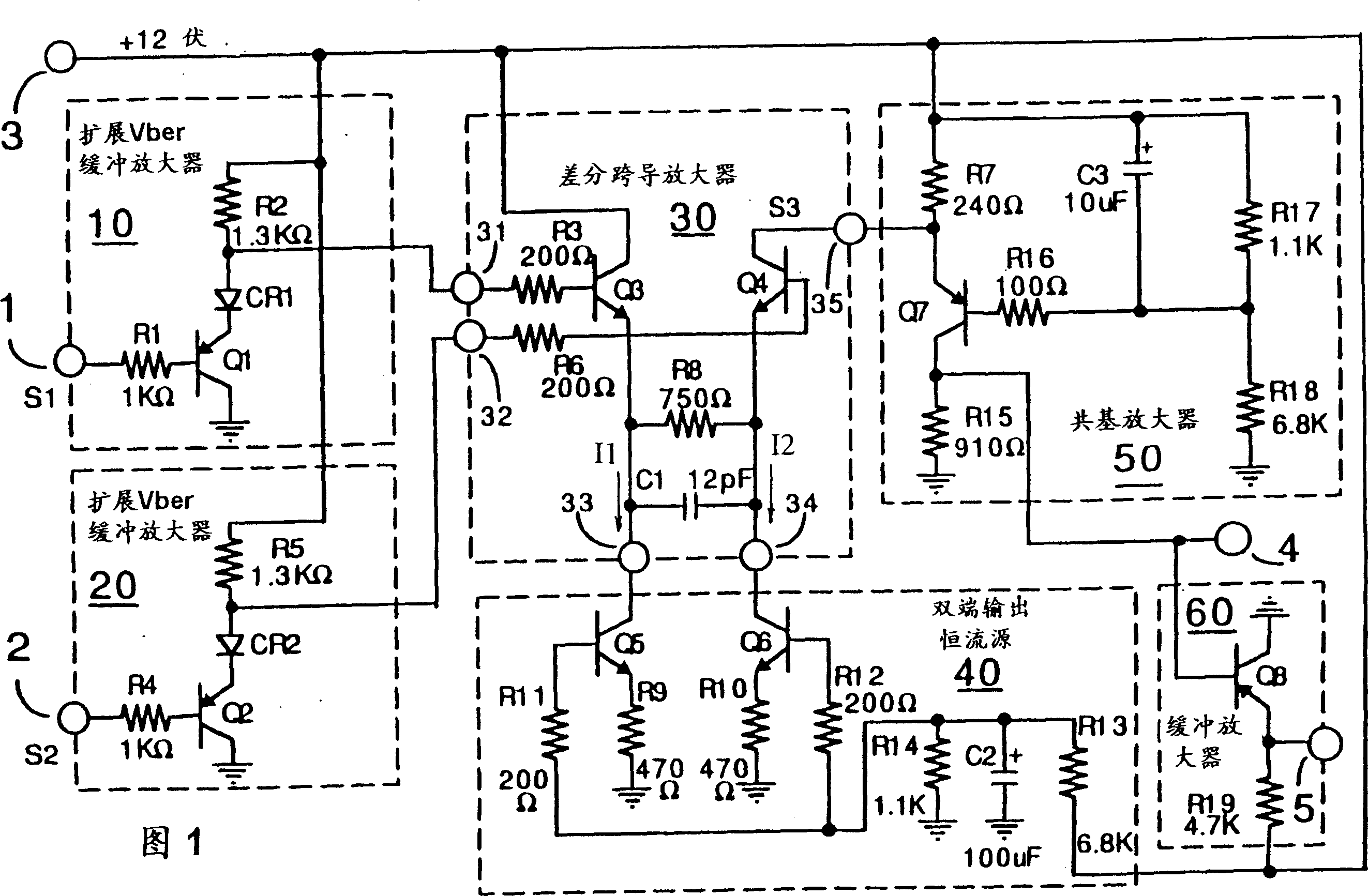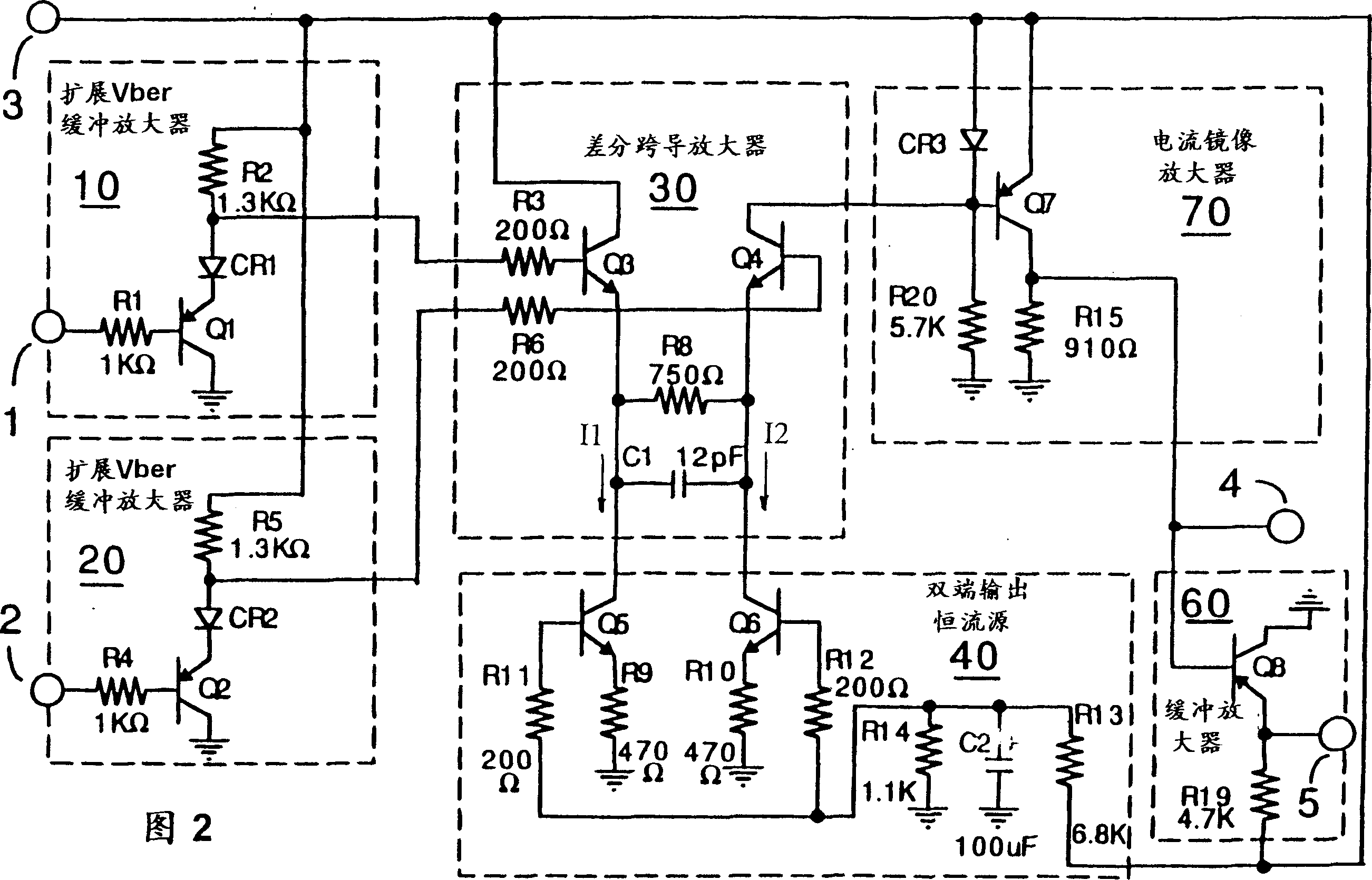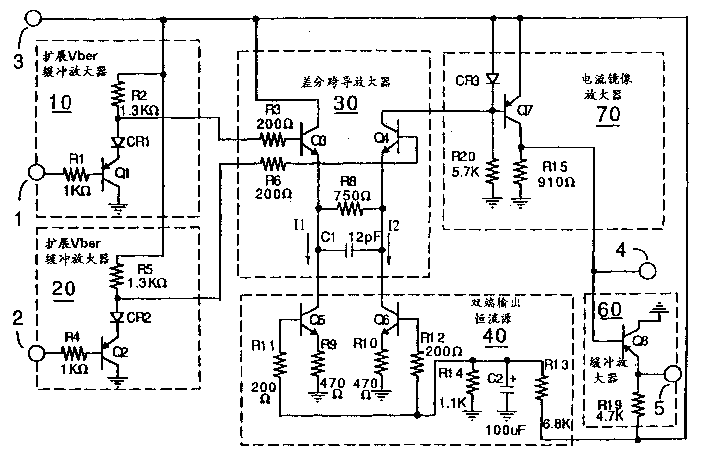Receiver for audio frequency/video frequency interlinked difference main line
A video bus and receiver technology, applied in the field of differential video bus receivers, can solve the problems of overcomplexity and high price
- Summary
- Abstract
- Description
- Claims
- Application Information
AI Technical Summary
Problems solved by technology
Method used
Image
Examples
Embodiment Construction
[0013] The video bus receiver of FIG. 1 includes a differential transconductance amplifier 30 having first and second input terminals 31 and 32 for receiving respective differential video input signals, having a fixed transconductance value (for the illustrated Exemplary component values are approximately 1300 microohms) and have an output 35 for supplying a single-ended video output signal current.
[0014] A pair of buffer amplifiers 10 and 20 are provided to couple the first and second differential video input signals S1 and S2 (to respective inputs 1 and 2) to the differential transconductance amplifier 30 via respective diode switches CR1 and CR2. Corresponding inputs 31 and 32.
[0015] Changing the subject for a moment and explaining in more detail later, diode switches CR1 and CR2 provide (I) connection of differential input signals S1 and S2 to inputs 31 and 32 of amplifier 30 when power (+12 volts) is applied to the bus receiver. and (II) the dual function of disc...
PUM
 Login to View More
Login to View More Abstract
Description
Claims
Application Information
 Login to View More
Login to View More - R&D
- Intellectual Property
- Life Sciences
- Materials
- Tech Scout
- Unparalleled Data Quality
- Higher Quality Content
- 60% Fewer Hallucinations
Browse by: Latest US Patents, China's latest patents, Technical Efficacy Thesaurus, Application Domain, Technology Topic, Popular Technical Reports.
© 2025 PatSnap. All rights reserved.Legal|Privacy policy|Modern Slavery Act Transparency Statement|Sitemap|About US| Contact US: help@patsnap.com



